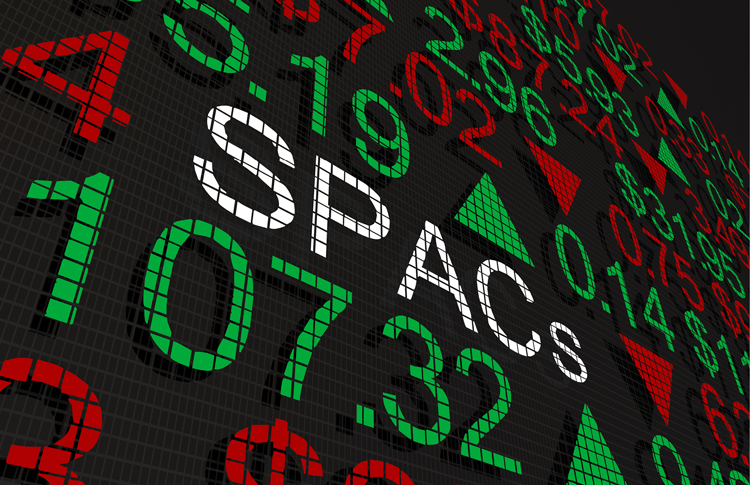 伴随特殊目的收购公司(SPAC)成为美国资本市场最炙手可热的新型上市融资模式,诸多中国公司及投资机构也将目光投向这一领域。在亚洲,新交所和港交所近期接连宣布将针对SPAC上市模式展开研究,该模式在亚洲落地指日可待。
伴随特殊目的收购公司(SPAC)成为美国资本市场最炙手可热的新型上市融资模式,诸多中国公司及投资机构也将目光投向这一领域。在亚洲,新交所和港交所近期接连宣布将针对SPAC上市模式展开研究,该模式在亚洲落地指日可待。
就在中国2021年春节前不久,中国企业家贾跃亭在美国加州创办的电动车初创企业法拉第未来传来一则好消息:这家创办于2014年、至今尚未拥有一台量产车,且融资之路困难重重的企业将通过SPAC方式在纳斯达克上市,上市将于二季度完成,并为法拉第未来揽获约10亿美元资金。法拉第未来也成为了最新一家借SPAC“春风”完成上市的中概股企业。
SPAC直译为“特殊目的收购公司”,又称为“空白支票公司”。这类公司本身并不营运业务,也不拥有资产。在申请上市集资后,SPAC将物色目标公司完成并购,而目标公司借此获得上市地位。SPAC上市后完成并购的期限为两年,若期内未能完成,该公司将面临清盘。
受到追捧
2020年被称为美国资本市场的“SPAC元年”。根据安永近期发布的一篇报告,2020年是美股SPAC上市创纪录的一年,全年共有248间SPAC上市,同比增长超三倍,占美股新股数量的53%,其中有64家已完成并购,即所谓的de-SPAC交易;募资金额同比增加4.9倍,超过809亿美元,占新股全年募资金额的48%。
受此股热潮影响,亚太地区证券交易所也纷纷将目光转向SPAC上市。继2月17日新交所率先表示将对SPAC展开调研后,3月2日,香港政府也在一份声明中表示,香港当局正在研究是否允许SPAC上市。
根据该份声明,香港证券及期货事务监察委员会及香港交易及结算所有限公司已经对一香港金融界高层人士论坛发布简报,说明有关SPAC挂牌的最新进展。
由香港财政司司长陈茂波担任主席的金融领导委员会已要求上述两个机构“进一步探讨合适的上市制度以加强香港作为国际金融中心的竞争力,同时保障投资大众的权益。”
根据财新报道,实际上早在2月初,港交所已经表现出对SPAC机制的关注。香港金融发展局行政总监区景麟当时曾发表博客称,当局已留意到去年SPAC在美国市场掀起的上市热潮,“SPAC上市的快速增长本身或存在一定风险,但鉴于SPAC上市模式日益盛行,我们认为有关议题值得谨慎研究”,他写道。
相比港交所相对审慎的态度,新交所对于SPAC的态度则更为“激进”。2月17日接受彭博社采访时新交所首席执行官罗文才(Loh Boon Chye)表示,新交所计划在第一季度就引入SPAC展开市场咨询,“若市场支持,我们希望今年就能实现(引入SPAC上市)”。
财新认为,“这意味着香港和新加坡或正争夺亚洲首个提供SPAC上市的金融中心之位。不过,单从首次公开募股(IPO)集资额来看,新交所还远远不及港交所”。
温斯顿律师事务所合伙人及亚洲业务部主席陆志明律师也指出了港交所的优势:“香港特区继续强化自身作为世界领先IPO中心的位置,并通过一系列创新举措吸引全球发行人。去年,港交所录得500亿美元IPO募资额,同比增长25%。香港是否又将如何采纳SPAC机制,以及该机制将为香港资本市场带来怎样的活力,都是十分有趣的话题。”
便利与影响
虽然目前采用SPAC模式实现上市的中国企业数量有限,但中企对于此种模式显然并不陌生。除法拉第未来外,最近的一个例子是共享办公平台优客工场,其于2019年12月向美国证券交易委员会(SEC)递交了IPO申请,但经历半年多等待后,终于换道SPAC,并在四个月左右完成上市。
此前登上新闻头条的中国企业SPAC还有和睦家与美联国际教育集团,两家公司分别是中国私营医院和英语培训行业最大规模企业。而在2018年,中国赴美上市的48家企业中就有6家采用了SPAC模式。
陆志明律师告诉ALB,SPAC模式的优势在于“能提供更大确定性,花费时间也更短——通常为几个月,因为注册上市流程在并购前就已经完成了。”
客户显然也注意到了这种热门模式。“过去六个月中,客户对SPAC的兴趣显著提升。”陆律师说,“越来越多的亚洲和中国客户委托我们代表赞助人创立SPAC,以和来自中国或亚洲其他地区的目标公司完成合并。还有部分亚洲和中国客户委托我们探索和SPAC合并的机会——即帮助它们选择合适的SPAC展开探讨。”
除来自中国和亚洲客户的兴趣外,陆律师指出,SPAC的火也会自然“烧”到亚太。“美国无疑是SPAC最为成熟的市场。”他说,“SPAC数量的快速增长意味着西方世界对于标的企业的争夺将加剧。我们预期会看到更多SPAC在亚洲搜寻标的公司。亚洲的赞助人,尤其是亚洲私募基金的普通合伙人在此方面具备天然竞争优势,出于和标的公司的紧密联系和亲近关系,它们更能识别并找到适合并购的亚洲独角兽企业。”
事实佐证了陆律师的说法:以香港首富李嘉诚次子李泽楷为例,其2020年成立了两家SPAC并登陆美国纳斯达克,合计集资逾8亿美元。彭博社日前报道,李泽楷正计划在美国设立第三家SPAC,集资数亿美元。
下一步举措
安永上述报告预计,2021年SPAC市场将继续保持活跃,将有更多的SPAC合并交易涌现,并购市场将持续升温。根据市场数据,目前已有超过300家SPAC在美国上市,且尚未寻找到合并标的。
不过安永也指出:若透过与SPAC合并上市的公司此后业绩表现不佳,可能会影响未来SPAC融资市场的热度。
谈到对港交所下一步举动的预期,陆志明律师也指出了审慎的重要性。“港交所预计将仔细研究美国的SPAC爆发,并考虑其在保护香港资本市场投资者中扮演的角色。预期港交所不会过快行动——一旦大量资金和现有SPAC绑定,而又难以找到合适的合并对象,SPAC也会失去现有的吸引力。”
Hong Kong Shows Interest, Caution Towards SPACs
With SPACs becoming a much-sought-after listing model in the U.S., many Asian companies and sponsors are looking to follow this new trend. In Asia, both the Singapore Exchange (SGX) and the Hong Kong Stock Exchange (HKEX) have initiated studies on SPACs and we might see this innovative listing model very soon in this region.
Shortly before Chinese New Year 2021, the California-based electric vehicle startup Faraday Future, founded by fugitive Chinese entrepreneur Jia Yueting, announced some good news: After nearly seven years of struggling with fundraising, the company will now solve its financial problems by merging with a SPAC and subsequently going public on the Nasdaq Stock Exchange. According to Reuters, the deal is expected to fetch Faraday Future $1 billion in gross proceeds.
SPAC is short for “special purpose acquisition corporation,” also known as a “blank check company.” A SPAC neither has operations, nor own any assets. After IPO registration, it will look to acquire private companies before taking the target company public. In the U.S., a SPAC needs to complete its acquisition, called a de-SPAC combination deal, within two years, otherwise it might face liquidation.
IN THE SPOTLIGHT
2020 was known as “the year of the SPAC” in U.S. capital markets. According to a recent EY report, the U.S. recorded 248 SPAC listings in 2020, accounting for 53 percent of all IPOs, with 64 having already completed their de-SPAC deals. SPAC listings raised $80.9 billion, accounting for 48 percent of all raised funds.
Inspired by these numbers, bourses in Asia have started looking at this new form of listing. SGX first expressed interest on Feb. 17, and then Mar. 2, a Hong Kong SAR government statement said that the territory is also “exploring whether to allow Special Purpose Acquisition Companies (SPAC) to list.”
According to the statement, the Hong Kong’s markets regulator, the Securities and Futures Commission (SFC) and HKEX have already briefed a forum of top financial leaders in the city about the latest developments in SPACs.
The Financial Leaders Forum, which is chaired by Hong Kong’s Financial Secretary, Paul Chan, had asked the two organisations “to explore suitable listing regimes to enhance the competitiveness of Hong Kong as an international financial centre while safeguarding the interests of the investing public.”
According to Caixin, a blog post by Au King Lun, executive director of Hong Kong’s Financial Services Development Council, set the ball rolling. In the post, he wrote that the SAR authorities had noticed the SPAC upsurge in the U.S. “The rapid growth of SPAC listings might cause certain risks. But with the growing popularity of this new model, we need to research cautiously on this topic,” he wrote.
Compared with Hong Kong’s caution, Singapore has been more proactive when it comes to SPACs. Loh Boon Chye, CEO of SGX, told Bloomberg in an interview on Feb. 17 that SGX would initiate market consultation on SPAC listings in the first quarter this year. “If the market is supportive, we hope to be able to do that sometime this year,” he said.
“This might mean that now Hong Kong and Singapore are competing to be the first financial hub in Asian to list SPACs. However, Singapore falls far behind in terms of IPO fundraising amount,” Caixin commented.
Simon Luk, partner and chairman of Winston & Strawn’s Asia practice agrees on HKEX’s existing advantage. “Hong Kong continues to reinforce its position as a world-leading IPO hub and has launched a number of innovative measures to attract global issuers. Last year, the HKEX recorded $50 billion in total funds raised through IPO, a 25 percent year-on-year growth. It will be interesting to see whether and how SPACs will be adopted in Hong Kong, and the dynamics it brings to the Hong Kong capital market,” he says.
CONVENIENCE AND IMPACT
Although only a few Chinese companies have been listed using the SPAC model so far, the concept is not new to them. Apart from Faraday Future, another recent example is the co-working platform Orisun. Orisun filed its IPO application to the U.S. Securities and Exchange Commission (SEC) in December 2019, and after more than half a year of waiting, decided to opt for a SPAC, and got listed in about four months.
In 2019, United Family Healthcare and EdtechX Holdings, two companies holding the largest market shares in the areas of private healthcare and English training, respectively, in China, also went public by merging with SPACs. Back in 2018, out of 48 Chinese companies that went public in the U.S., six chose SPACs.
Luk tells ALB that the advantages of SPAC are obvious. “SPACs offer more certainty and will take less time to complete because the IPO registration process has been completed ahead of a business combination, often within a few months,” he says.
This has caught the attention of the clients. “In the last six months, interest in SPACs has steadily increased,” Luk says. “we have seen increasing interests from Asian and Chinese clients appointing us to act for sponsors to form SPACs for possible business combination with targets from China or elsewhere in Asia. We have also received inquiries and are advising Asian and Chinese clients exploring opportunities to merge with SPACs - we are selecting the right SPACs for discussion of a merger.”
Luk points out that the U.S. is undoubtedly the most sophisticated market for SPACs, but the trend will inevitably come to Asia. “The rapidly increasing number of SPACs means a heated competition for targets in the Western world. We expect to see more SPACs expand their search for business combination targets in Asia. Asian sponsors, especially general partners in Asian private equity funds, have a natural competitive advantage when it comes to identifying and finding merger candidates from the unlisted unicorns in Asia because of their close connection and proximity to these targets,” he says.
Luk’s observation is backed up by recent news: After forming and listing two SPACs in the U.S. in 2020, Richard Li, the younger son of Hong Kong business magnate Li Ka-shing, is now planning to form a third one this year, with the aim of raising millions of dollars.
NEXT STEPS
According to the EY report, the SPAC market will remain active in 2021 with more de-SPAC combinations emerging. According to market data, there are more than 300 listed SPACs in the U.S. that haven’t found target companies.
But EY also points out that if merged companies do not perform well, it might dampen the enthusiasm for SPACs in the future.
Luk also advocates caution on the part of the Hong Kong bourse. “HKEX will study the U.S. SPAC explosion carefully and will consider its role to protect the investors in the Hong Kong capital markets. It is not likely to move fast as the SPAC explosion may lose its attraction if too much money is tied up in current SPACs looking for business combination and it is difficult to find great listing candidates,” he says.
To contact the editorial team, please email ALBEditor@thomsonreuters.com.


